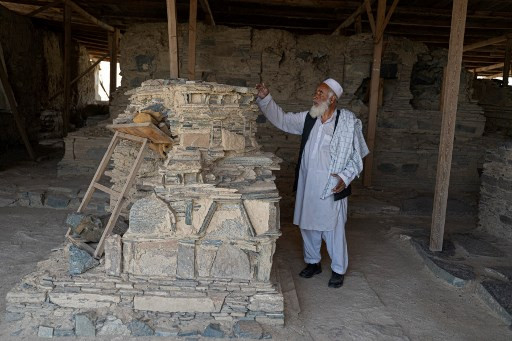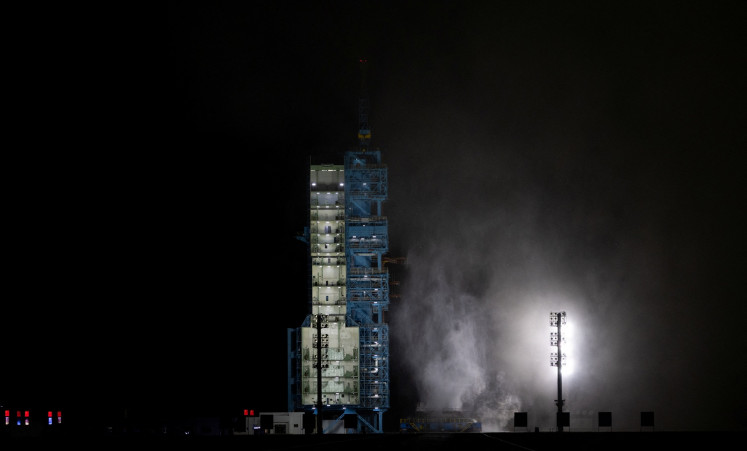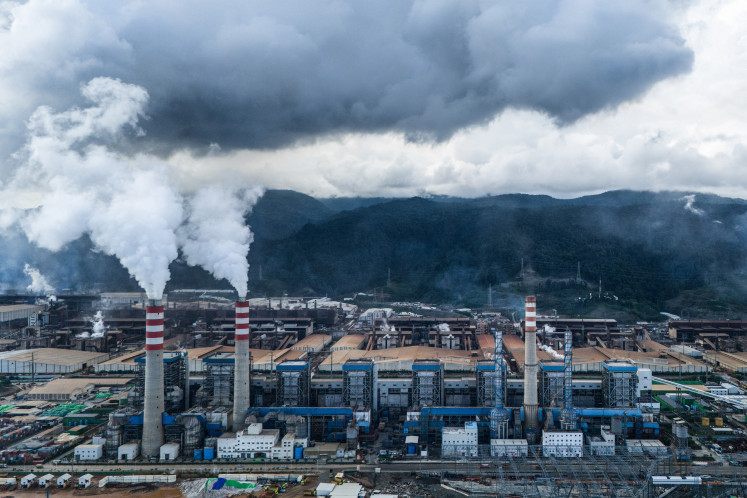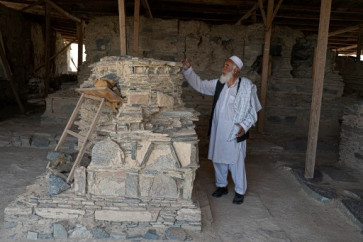Popular Reads
Top Results
Can't find what you're looking for?
View all search resultsPopular Reads
Top Results
Can't find what you're looking for?
View all search resultsAncient Afghan Buddhist city threatened by Chinese copper mine
Change text size
Gift Premium Articles
to Anyone
 In this photograph taken on May 17, 2022, historical monuments department manager Jalat Surkhabi shows a structure uncovered at an archaeological site in Mes Aynak, in the eastern province of Logar. An ancient Buddhist city carved out of immense peaks near Kabul is in danger of disappearing forever, swallowed up by a Chinese consortium exploiting one of the world's largest copper deposits. Located at the confluence of Hellenistic and Indian cultures, Mes Aynak -- believed to be between 1,000 and 2,000 years old -- was once a vast city organised around the extraction and trade of copper.
(AFP /Wakil Kohsar )
In this photograph taken on May 17, 2022, historical monuments department manager Jalat Surkhabi shows a structure uncovered at an archaeological site in Mes Aynak, in the eastern province of Logar. An ancient Buddhist city carved out of immense peaks near Kabul is in danger of disappearing forever, swallowed up by a Chinese consortium exploiting one of the world's largest copper deposits. Located at the confluence of Hellenistic and Indian cultures, Mes Aynak -- believed to be between 1,000 and 2,000 years old -- was once a vast city organised around the extraction and trade of copper.
(AFP /Wakil Kohsar )
A
n ancient Buddhist city carved out of immense peaks near Kabul is in danger of disappearing forever, swallowed up by a Chinese consortium exploiting one of the world's largest copper deposits.
Located at the confluence of Hellenistic and Indian cultures, Mes Aynak -- believed to be between 1,000 and 2,000 years old -- was once a vast city organized around the extraction and trade of copper.
Archaeologists have uncovered Buddhist monasteries, stupas, fortresses, administrative buildings and dwellings, while hundreds of statues, frescoes, ceramics, coins and manuscripts have also been unearthed.
Despite looting at the beginning of the century, Mes Aynak is "one of the most beautiful archaeological sites" in the world, says Bastien Varoutsikos, an archaeologist for the French company Iconem, which is working to digitize the city and its heritage.
But the need for the Taliban -- who returned to power in August last year -- to find new revenue streams after international aid was frozen has made mining the project a priority, and could put an end to further archaeological work.
Mining consortium
Objects discovered date mainly from the 2nd to 9th century AD, but an earlier occupation is also believed likely, and pottery dating back to the Bronze Age -- well before the birth of Buddhism -- has also been found.


















